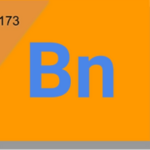Full disclosure: We’ve just finalized our partnership agreement with Magic Leap so yeah, we resell the ML2’s (Magic Leap 2’s). As an fyi, our approach to partnership in the XR space is to partner with who we believe are the best hardware and software vendors. We don’t partner with everybody…….just the vendors we’ve checked out and seem to be the best. Unsurprisingly, good hardware and software are fundamental for solutions that work. That’s why we stick to the good ones.
Having said that, I was super excited to get my hands on the ML2. Kudos to Magic Leap as they sent us a demo unit right away so we could start putting together solutions.

Have to say I did not expect a brand new one as a demo unit but that’s what they sent – awesome (thanks to Shane Rochester for getting it done!).
So what’s in the box vs. what I expected? Short story is it’s what I expected plus a couple things, and there were some “that’s nice” moments.
I expected the ML2 glasses and the drive of course. On closer inspection, the glasses are quite a feat of technology, with the optics being center stage. Even to someone new to the AR (Augmented Reality) field, I could tell there’s a lot of tech packed into the eyepieces. If you look closely you can see multiple layers of optical material (waveguides, to be more precise) sandwiched together along with lots of inward and outward-looking sensors (cameras to us regular people). This is what gives the ML2 the precise spatial awareness it needs to overlay virtual reality on real reality so you can see Augmented Reality.
On closer inspection, the glasses are quite a feat of technology, with the optics being center stage. Even to someone new to the AR (Augmented Reality) field, I could tell there’s a lot of tech packed into the eyepieces. If you look closely you can see multiple layers of optical material (waveguides, to be more precise) sandwiched together along with lots of inward and outward-looking sensors (cameras to us regular people). This is what gives the ML2 the precise spatial awareness it needs to overlay virtual reality on real reality so you can see Augmented Reality.

The other really important part, and you don’t see this until you turn the ML2 on, is the dynamic dimming feature. This dims or brightens the virtual content according to the conditions of the physical environment. As you can imagine, being in a really bright environment could easily wash out the virtual content being projected in front of you. Being a guy who lives in Florida, I looked out the window and to nobody’s surprise, it was super bright and sunny. So………what the heck, let’s go outside. What I found out standing on my pool deck in 100% sunshine was the virtual content in the ML2 appears just as bright outside as it does inside. It was a “that’s nice” moment.
I like that the drive only has a power button and a volume up/down button. Just push the power button and watch the lights come on………no instructions necessary – I like that. I noted that the fan is on continually. The drive was easy to clip into the belt. To my surprise, the drive and the headset are hardwired together, no connectors. Not that it bothers me either way.

The drive itself looks like a sandwich, with space in the middle of it. I’m sure there’s a good engineering reason for it – I’ll go dig it out eventually – but it has an interesting look. Again, not something I have a strong opinion on.
The single hand controller is the last major piece of hardware. Totally reminds me of the Meta Quest Pro hand controller, which I like very much.

The ML2 controller fits very comfortably in your hand and it has a nice, smooth rubberized grip – another “that’s nice” moment. In use, it is very precise, which I expected and is a minimum requirement for the kinds of things we anticipate doing with the ML2. Expectations met.
Other than that, there are miscellaneous bits and bobs in the box. Some fitment pieces you can put on to get a better fit, a micro fiber cloth to clean the glasses, a tether for the glasses so they don’t fall off as well as a tether for the hand controller.

And there are cables for the two power supplies – one for the controller and one for the drive. Why two? No idea – we’ll have to ask one of the ML engineers. The case itself is really nice. Neoprene form-fitted cutouts for the headset and drive. And the Magic Leap wording on top of the case has that smooth, rubberized feel to it……..yep, another “that’s nice” moment.
The last thing of note is heat dissipation. That turns out to be a major challenge for AR glasses and it’s always instructive to see how manufacturers address the issue. I did notice when I was outside in the sunshine, about the time my feet got too hot to stand on my pool deck, the glasses were getting too hot to be on my head. Even inside, they get noticeably warm. I noted that the design ensures the heat is mostly at the top of the glasses and so radiates out into space rather than onto your face. And I suspect the odd drive arrangement is a way of separating and cooling the main CPU and GPU chips. Magic Leap has done well with the heat challenge, and I expect will do better still in the future.

I’ll finish by saying these AR glasses are state of the art, incorporating the leading technology in the field. Everything about them, everything about the components and associated carrying case says “quality”. And………they have that “I live in the future” look to them.
Can’t wait to put them to work.






